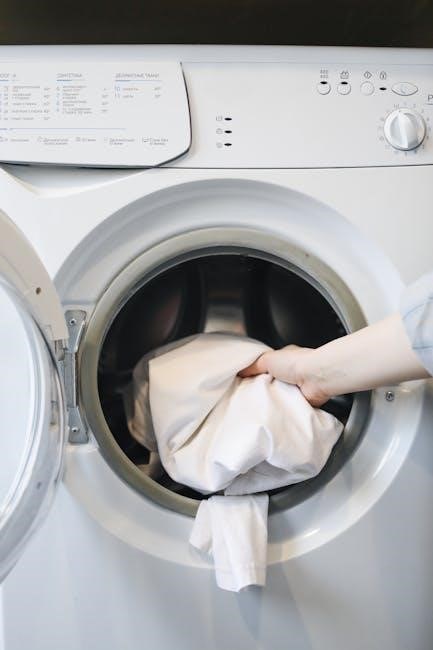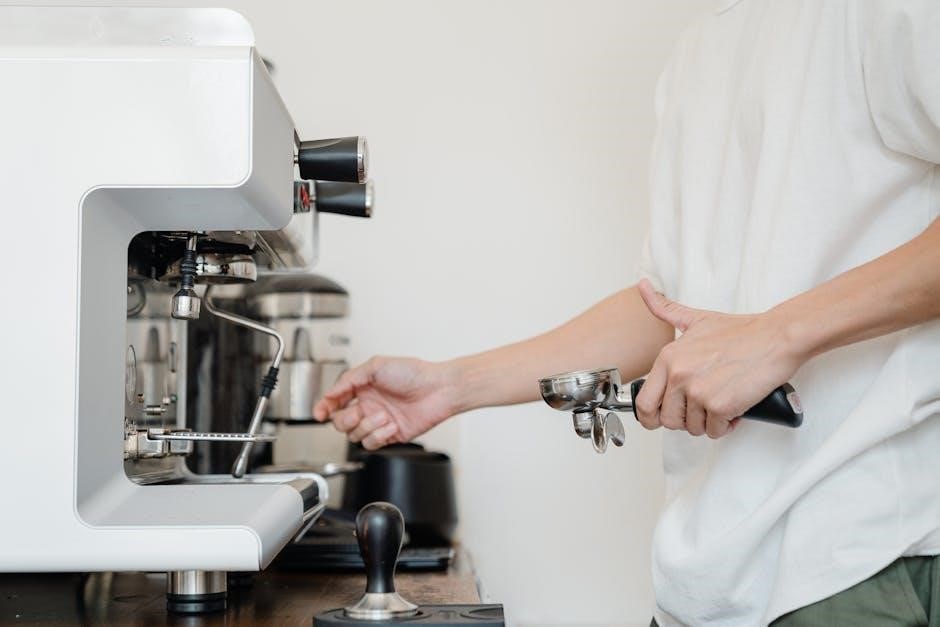Manual extraction involves various methods and kits for extracting nucleic acids from sample materials using different technologies and applications in medical diagnostics and research fields quickly.
Definition and Overview
Manual extraction refers to the process of isolating and purifying nucleic! acids from various sample materials using different methods and techniques. This process is crucial in medical diagnostics and research fields, where accurate and reliable results are essential. The manual extraction process involves several steps, including sample preparation, extraction, and purification, which can be time-consuming and labor-intensive. However, it provides a high degree of control and flexibility, allowing researchers to optimize the process for specific applications. With the advancement of technology, manual extraction methods have evolved to include various kits and reagents that simplify and streamline the process, making it more efficient and effective. Overall, manual extraction remains a vital tool in molecular biology and medical diagnostics, enabling researchers to extract and analyze nucleic acids with precision and accuracy. Various methods and kits are available for manual extraction.

Methods of Manual Extraction
Manual extraction methods include solvent extraction and other techniques for isolating nucleic acids from samples quickly and efficiently using various kits and reagents available.
Solvent Extraction Method
The solvent extraction method is a widely used technique in manual extraction, involving the use of a solvent to separate the desired compound from the sample material. This method is commonly used for extracting nucleic acids, such as DNA and RNA, from various sources. The solvent extraction method typically involves several steps, including the addition of a solvent to the sample, mixing, and then separating the solvent from the sample. The resulting extract can then be further purified and concentrated using various techniques. The solvent extraction method is a simple and effective way to extract nucleic acids, and is often used in conjunction with other methods, such as chromatography and centrifugation. The choice of solvent is critical in this method, and different solvents may be used depending on the specific application and the properties of the sample.

Comparison with Automated Extraction
Manual extraction methods are compared to automated systems for efficiency and accuracy in various applications and research fields quickly and effectively every time always.
Advantages and Disadvantages
The advantages of manual extraction include the ability to process small sample sizes and the flexibility to customize protocols for specific applications. However, manual extraction methods can be time-consuming and labor-intensive, requiring specialized training and expertise. Additionally, manual extraction methods may be more prone to human error and contamination, which can affect the accuracy and reliability of the results. On the other hand, manual extraction methods can be more cost-effective and allow for greater control over the extraction process. Overall, the advantages and disadvantages of manual extraction methods must be carefully considered when selecting an extraction method for a particular application or research study, and the choice of method will depend on the specific requirements and goals of the project, including the type of sample and the desired outcome, and the availability of resources and equipment.

Applications of Manual Extraction
Manual extraction is used in medical diagnostics and research fields quickly and efficiently every day.
Medical Diagnostics
Manual extraction plays a crucial role in medical diagnostics, allowing for the analysis of nucleic acids from various sample materials.
The extracted nucleic acids are further processed using different technologies, including DNASTRIP, FluoroType, and LiquidArray.
These technologies enable the detection and identification of specific genetic material, which is essential for diagnosing diseases and developing personalized treatment plans.
The use of manual extraction in medical diagnostics has improved the accuracy and speed of test results, enabling healthcare professionals to make informed decisions.
Additionally, manual extraction has facilitated the development of new diagnostic tests and assays, expanding the range of medical applications.
The application of manual extraction in medical diagnostics continues to evolve, with ongoing research and development aimed at improving the efficiency and effectiveness of these methods.
Overall, manual extraction is a vital component of medical diagnostics, enabling the analysis of genetic material and informing patient care.

Types of Manual Extraction Kits
Various kits are available for manual extraction, including QIAamp kits, facilitating nucleic acid extraction quickly and efficiently from different sample materials and sources always.
QIAamp Viral RNA Mini Kit
The QIAamp Viral RNA Mini Kit is a popular choice for manual extraction of viral RNA from various sample materials, including blood, tissue, and swabs. This kit uses a spin column-based method to isolate high-quality RNA, which can then be used for downstream applications such as PCR and sequencing. The QIAamp Viral RNA Mini Kit is designed to be easy to use and provides reliable results, making it a favorite among researchers and clinicians. The kit includes all the necessary reagents and materials for manual extraction, and can be used to extract RNA from a wide range of viruses, including HIV, influenza, and hepatitis. With its high yield and purity, the QIAamp Viral RNA Mini Kit is an essential tool for any laboratory involved in viral research or diagnostics, providing accurate and reliable results every time.
Challenges and Limitations
Manual extraction is time-consuming and labor-intensive requiring skilled personnel always.
Time-Consuming and Labor-Intensive
Manual extraction is a process that requires a significant amount of time and labor to complete. The process involves several steps, including sample preparation, extraction, and purification, which can be tedious and time-consuming. Additionally, manual extraction requires skilled personnel to perform the tasks, which can be labor-intensive and may lead to human error. The time-consuming nature of manual extraction can also lead to delays in downstream applications, such as medical diagnostics and research. Furthermore, the labor-intensive nature of manual extraction can result in increased costs and reduced productivity. Overall, the time-consuming and labor-intensive nature of manual extraction can be a significant challenge in various fields. The use of automated systems can help alleviate these challenges, but manual extraction remains a crucial step in many applications. Manual extraction requires careful planning and execution to ensure accurate results.
Future of Manual Extraction
Manual extraction will evolve with advances in technology and innovations in medical diagnostics and research fields quickly and efficiently every day.
Advances in Technology
Advances in technology are expected to play a significant role in the future of manual extraction, with innovations in fields such as automation and robotics.
The development of new technologies will likely lead to improved efficiency and accuracy in manual extraction methods.
These advancements will also enable the extraction of high-quality nucleic acids from a wide range of sample materials, including blood, tissue, and other biological samples.
Furthermore, advances in technology will also lead to the development of new manual extraction kits and systems that are more user-friendly and cost-effective.
The use of advanced technologies such as magnetic-bead based systems and chromatography will also become more prevalent in manual extraction methods.
Overall, the future of manual extraction looks promising, with advances in technology expected to drive innovation and improvement in this field, leading to better outcomes in medical diagnostics and research.

Leave a Reply
You must be logged in to post a comment.